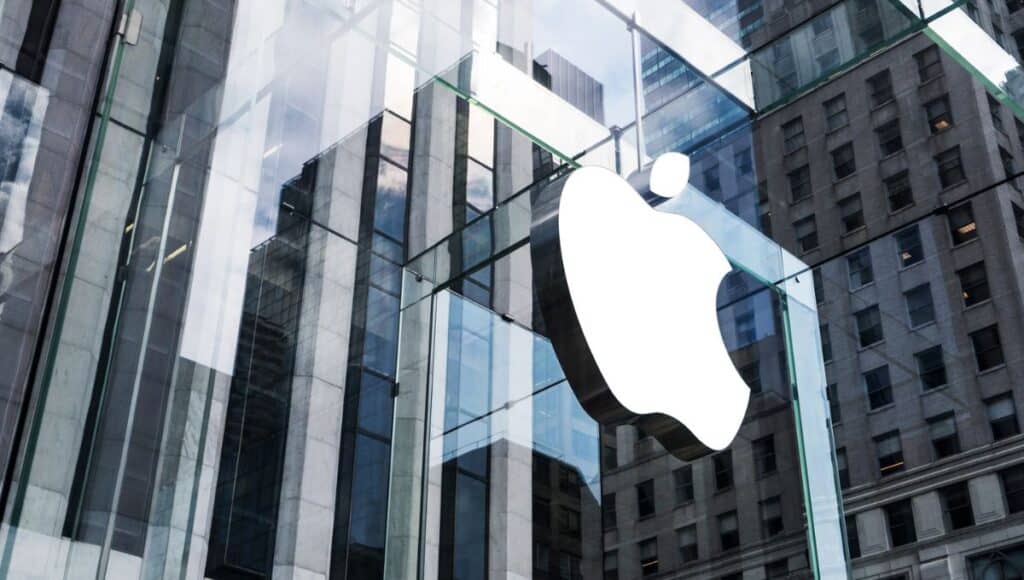Investing in Apple stock? Buckle up, folks! We’re about to take a deep dive into the wild world of this tech titan. From stock performance to financial metrics, analyst ratings to future growth potential, we’ve got it all covered.
But here’s the thing – we’re not just going to bombard you with numbers and jargon. Nope, we’re keeping it real, breaking it down in plain English so you can actually understand what’s going on. Think of us as your friendly neighborhood stock whisperers, translating the complexities of the market into bite-sized insights you can actually use.
Apple’s Stock Performance Overview
Alright, let’s start with the million-dollar question: how has Apple’s stock been performing lately? Well, as of [insert current date], Apple’s stock price is sitting pretty at around $191.04. Now, I know what you’re thinking, “That’s a decent chunk of change, but what does it really mean?”
Here’s the thing: while the stock has seen a slight dip from the beginning of the year (it was at $192.53), the overall trajectory has been nothing short of impressive. We’re talking about a stock that’s gone from around $60 in 2014 to where it is now. That’s some serious growth, folks!
But what’s been driving these fluctuations, you ask? Well, it’s a mix of factors, really. Product launches, quarterly earnings reports, and good ol’ market conditions have all played a role in shaping Apple’s stock performance.
Financial Analysis Of Apple
Alright, now that we’ve got the stock performance covered, let’s dive into the nitty-gritty of Apple’s financial situation. Because let’s be real, numbers don’t lie.
In their latest earnings report, Apple reported a whopping $90.75 billion in revenue. Talk about hitting it out of the park! And while that’s a slight decrease from the previous year (thanks to those pesky market challenges), their net margin is still sitting pretty at 26.31%. Not too shabby, right?
But wait, there’s more! Apple’s earnings per share (EPS) for the last quarter was $1.53, which is just a smidge above the analyst consensus estimate of $1.51. Now, I know what you’re thinking, “That’s great and all, but what does it really mean?”
Well, my friend, these financial metrics are a testament to Apple’s ability to keep raking in the dough, even when the market is acting a little funky. It’s like they’ve got a secret recipe for success or something!
Fintechzoom Ratings And Price Targets Of Apple Stock
Now, let’s talk about something that gets investors all hot and bothered: price targets and analyst ratings. Because let’s be real, we all want to know where this Apple stock train is headed.
According to the latest consensus from our friends over at Fintechzoom, the average price target for Apple is sitting at around $204.83. That’s a solid 7.2% increase from the current stock price. Not too shabby, eh?
But here’s the kicker: the analysts’ projections are all over the place. We’re talking about a range from $160 (the pessimists) all the way up to $250 (the dreamers). These numbers are based on a whole slew of factors, like Apple’s financial health, market position, and potential for future growth.
Now, let’s talk about those all-important analyst ratings. Out of 34 analysts, the consensus rating for Apple is a “moderate buy.” We’ve got 20 “buy” recommendations, 12 “hold,” and just 1 poor soul saying “sell.”
Recent updates from heavy-hitters like Morgan Stanley, Wedbush, and Canaccord Genuity have all maintained strong buy ratings, which is a pretty good indicator that they’ve got faith in Apple’s game plan and financial resilience.
Take Wedbush, for example. They’re reiterating that $250 price target, citing Apple’s robust ecosystem and innovative product pipeline as major selling points.
Apple’s Growth Drivers And Future Outlook
Alright, so we’ve covered the past and the present, but what about the future? What’s in store for this tech titan?
Well, according to the analysts over at Fintechzoom, there are a few key growth drivers that could propel Apple to even greater heights.
First up, we’ve got the ever-expanding services segment. From Apple Music to iCloud, these recurring revenue streams are like a well-oiled machine, consistently pumping out cash for the company.
Then there’s the potential for new product categories. We’re talking about rumored forays into areas like augmented reality (AR) and autonomous vehicles. Now, I know what you’re thinking, “But those are just rumors, right?”
True, but Apple has a knack for disrupting industries and creating entirely new product categories. Remember when the iPhone first came out? Game-changer.
And let’s not forget about the global market. While Apple is already a household name in many countries, there’s still plenty of room for growth, especially in emerging markets like India and Southeast Asia.
The Apple Ecosystem: A Competitive Advantage
One of the things that sets Apple apart from the competition is its ecosystem. We’re talking about a seamless integration of hardware, software, and services that just works.
Think about it: once you’re in the Apple ecosystem, it’s pretty darn hard to leave. You’ve got your iPhone, your MacBook, your Apple Watch, and all your data synced up across devices. It’s like a cozy little tech bubble that’s really hard to burst.
And that’s not even mentioning the loyalty factor. Apple has cultivated a cult-like following of customers who swear by the brand and eagerly await each new product release.
This ecosystem advantage is something that analysts constantly point to as a major selling point for Apple. It’s a competitive moat that’s hard for other companies to replicate, and it’s a big reason why investors remain bullish on the stock.
Risks And Challenges Facing Apple
Alright, let’s be real for a minute. As great as Apple is, no company is perfect, and there are certainly some risks and challenges on the horizon.
For starters, there’s the ever-present threat of competition. We’re talking about tech giants like Samsung, Google, and even upstarts like OnePlus nipping at Apple’s heels. The smartphone and consumer electronics markets are cutthroat, and Apple can’t afford to rest on its laurels.
Then there’s the issue of innovation. Apple has built its reputation on being a trendsetter and a disruptor, but can they keep that momentum going? Innovation is the lifeblood of any tech company, and if Apple starts to stagnate, it could spell trouble.
And let’s not forget about geopolitical and macroeconomic factors. Trade tensions, supply chain disruptions, and economic downturns can all impact Apple’s bottom line in a big way.
But here’s the thing: Apple is no stranger to adversity. They’ve weathered storms before, and their resilience and adaptability are part of what makes them such a powerhouse in the industry.
Apple’s R&D Investments: Fueling Innovation
One of the key drivers behind Apple’s success has been its relentless pursuit of innovation. And at the heart of this innovation lies the company’s massive investments in research and development (R&D).
In its latest fiscal year, Apple poured a staggering $25.7 billion into R&D efforts. That’s a whole lot of cash being pumped into developing new technologies, products, and services. And you know what they say – you’ve gotta spend money to make money.
This commitment to R&D is what has allowed Apple to stay ahead of the curve and continuously push the boundaries of what’s possible in the tech world. From the groundbreaking iPhone to the sleek and powerful M-series chips powering their latest devices, Apple’s innovations have consistently blown our minds.
But it’s not just about flashy new gadgets. Apple’s R&D investments also go towards improving existing products, enhancing user experiences, and exploring cutting-edge technologies like augmented reality (AR), virtual reality (VR), and artificial intelligence (AI).
Apple’s Supply Chain: A Well-Oiled Machine
Another key factor that contributes to Apple’s success is its supply chain prowess. We’re talking about a finely-tuned, well-oiled machine that ensures the smooth production and distribution of Apple’s products worldwide.
From sourcing components and materials to managing manufacturing partners and logistics, Apple’s supply chain is a marvel of efficiency and coordination. And let’s not forget about the company’s stringent quality control measures, which ensure that every product that rolls off the assembly line meets Apple’s exacting standards.
But it’s not just about the nuts and bolts (pun intended). Apple’s supply chain also plays a crucial role in managing inventory levels, forecasting demand, and adapting to changing market conditions. This agility allows the company to respond quickly to shifts in consumer preferences and stay ahead of the competition.
Of course, managing a global supply chain of this scale is no easy feat. Apple has faced its fair share of challenges, from component shortages to labor issues at manufacturing facilities. But time and time again, the company has demonstrated its ability to navigate these challenges and maintain the smooth flow of operations.
Apple’s Retail Experience: The Ultimate Customer Engagement
When it comes to customer engagement, Apple has truly set the bar high with its iconic retail stores. These sleek, modern spaces are more than just places to buy products – they’re immersive experiences designed to showcase Apple’s innovations and foster a sense of community among customers.
From the moment you step inside an Apple Store, you’re greeted by knowledgeable and friendly staff members who are there to guide you through the product lineup and answer any questions you might have. It’s a far cry from the impersonal, transactional experiences often associated with traditional retail outlets.
But it’s not just about the in-store experience. Apple’s retail strategy also extends to its online presence, with a user-friendly website and seamless integration between physical and digital channels. Customers can easily research products, make purchases, and even schedule appointments for personalized support – all from the comfort of their own homes.
This emphasis on creating a superior customer experience has paid off handsomely for Apple. The company’s retail stores are consistently ranked among the highest in terms of customer satisfaction and sales per square foot, a testament to the power of Apple’s brand and its ability to engage with customers on a deeper level.
Conclusion:
In the dynamic world of tech stocks, Apple stands tall as a powerhouse worth watching. Its impressive financial performance, innovative spirit, and robust ecosystem solidify its position as a compelling investment opportunity. However, investors must stay vigilant, conducting thorough research and weighing potential risks alongside rewards.
Despite challenges from competition and the need for continuous innovation, Apple’s resilience, brand loyalty, and commitment to corporate responsibility fortify its standing. As the tech titan navigates the future, its ability to adapt, disrupt, and captivate consumers will be pivotal.
While no investment is risk-free, Apple’s track record and future prospects make it a stock worth considering for those seeking exposure to the ever-evolving tech landscape.







